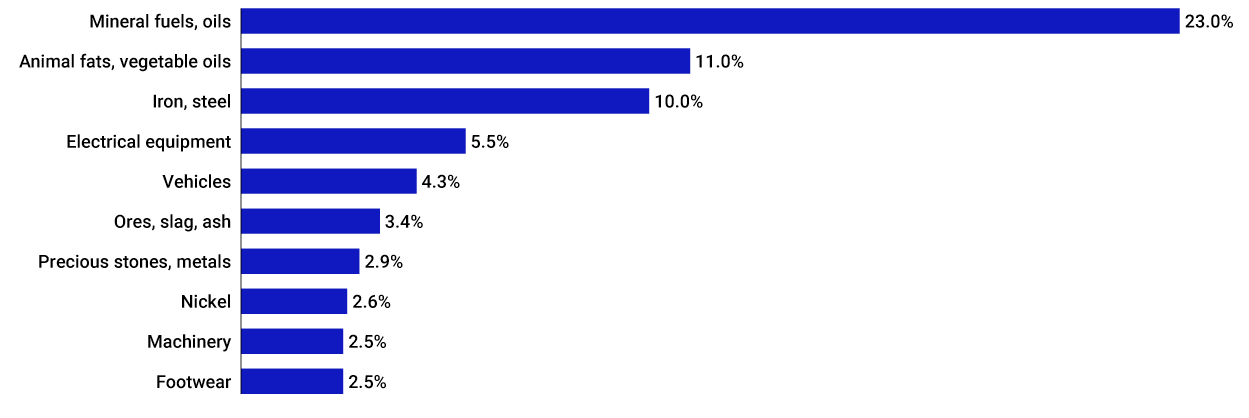Indonesia's top exports by category for the year of 2023 as a percent of total exports (Trading Economics/UN Comtrade Database) Statistics

Data Analysis
What This Map Shows
This data visualization displays "Indonesia's top exports by category for the year of 2023 as a percent of total exports (Trading Economics/UN Comtrade Database)" and provides a clear visual representation of the underlying data. This allows us to understand spatial patterns and relationships across the featured region.
Deep Dive into the Topic
Economic geography examines the spatial distribution of economic activities, wealth, and resources across different regions. Economic patterns reflect a complex mix of factors including natural resource availability, geographic location, infrastructure development, educational levels, government policies, and historical economic development.
Regional economic differences often stem from geographic advantages or disadvantages. Areas with natural ports, fertile agricultural land, mineral resources, or strategic locations along trade routes typically develop stronger economies. Conversely, landlocked regions, areas with harsh climates, or those lacking natural resources may face economic challenges.
Economic development also clusters around urban centers, creating economic agglomerations where businesses benefit from proximity to suppliers, customers, and skilled workers. This clustering effect explains why certain metropolitan areas become economic powerhouses while rural areas may struggle economically. Understanding these patterns helps policymakers design regional development strategies and address economic inequalities.
Regional Analysis
The regional variations visible in this map reflect the diverse geographic conditions and development patterns across different areas. Each region's characteristics result from unique combinations of physical geography, historical development, and human activities that have shaped the landscape over time.
Comparing different regions reveals interesting contrasts in how geographic factors influence spatial patterns. Some areas may show concentrated patterns due to favorable environmental conditions, while others display more dispersed distributions reflecting different geographic constraints or opportunities.
These regional differences provide valuable insights into how geography shapes human activities and natural processes. Understanding these variations helps explain why certain areas develop particular characteristics and how different regions adapt to their specific geographic conditions.
Significance and Impact
This geographic information has important implications for understanding spatial relationships and regional development patterns. The patterns revealed in this visualization help us comprehend how geography influences everything from natural processes to human activities and economic development.
For researchers, planners, and policymakers, this type of spatial analysis provides essential insights for decision-making. Whether addressing environmental challenges, planning infrastructure development, or managing resources, understanding geographic patterns helps create more effective strategies and solutions.
The broader significance lies in how this information contributes to our understanding of geographic systems and spatial relationships. This knowledge helps us predict future trends, identify potential challenges, and develop more sustainable approaches to managing our relationship with the geographic environment.
Comments
Loading comments...
Leave a Comment
About the Author

Alex Cartwright
Senior Data Visualization Expert
Alex Cartwright is a renowned data visualization specialist and infographic designer with over 15 years of experience in...